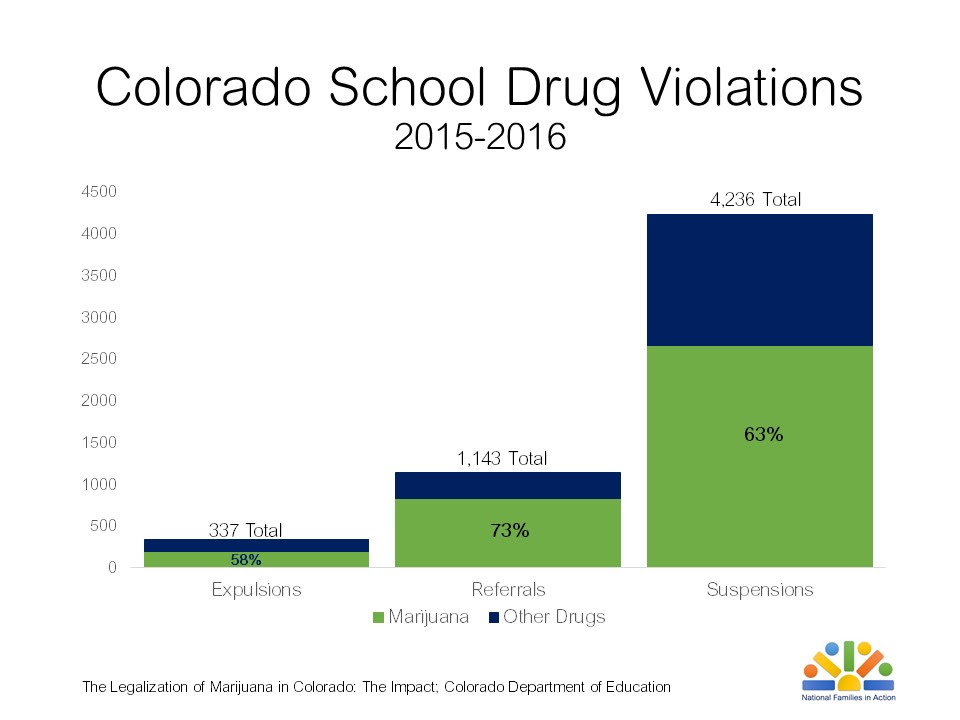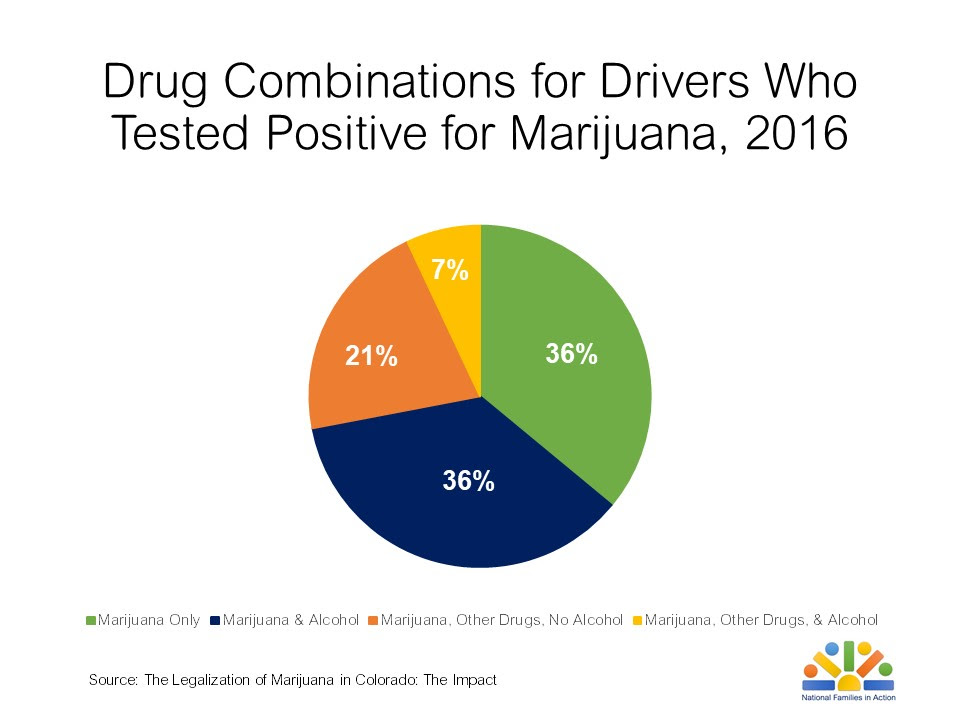New Report on Impact of Legal Pot in Colorado Schools
This week, the Rocky Mountain High Intensity Drug Trafficking Area released its fifth annual report titled The Legalization of Marijuana in Colorado: The Impact, Volume 5. We devote today’s issue of The Marijuana Report newsletter to highlighting a few of many significant findings the report contains.
National Families in Action has remade some of the graphs and charts in the report to emphasize key findings. This one shows how many of Colorado’s students were expelled, referred to law enforcement, or suspended in the 2015-2016 school year. This is the first year the Colorado Department of Education differentiated marijuana violations from all drug violations, and this year’s report will serve as a baseline to determine whether marijuana violations increase, decrease, or stay fundamentally the same.

Read The Legalization of Marijuana in Colorado: The Impact, Volume 5 here. This information appears on page 41 (PDF page 49).


The new report explains that although Colorado created its own Healthy Kids Survey, the combination of a poor response rate and the fact that several major counties with large populations had low or no participation rendered the 2015 survey’s results invalid. For a discussion of this see page 33 (PDF page 41). Volume 5 relies on the National Survey on Drug Use and Health to compare Colorado marijuana use with the national average for ages 12-17, 18-25, and 26 & older over a ten year period (2005-2006 to 2014-2015).
See data for these graphs on the following pages:
- Ages 12-17, page 36 (PDF page 44)
- Ages 18-25, page 56 (PDF page 64)
- Ages 26 & Older, page 60 (PDF page 68)
Read The Legalization of Marijuana in Colorado: The Impact, Volume 5 here.
The report notes that data from the National Highway Traffic Safety Administration, 2006-2011 Fatality Analysis Reporting System (FARS), and 2012-2016 Colorado Department of Transportation show that drivers testing positive for marijuana who were killed in traffic crashes rose from 6 percent of all traffic deaths in 2006 to 20 percent eleven years later. Marijuana-related traffic deaths jumped from 9 percent to 14 percent once the state commercialized marijuana for medical use and from 11 percent to 20 percent after legalizing the drug for recreational use.
Read more about marijuana-related driving in Colorado here starting on page 13 (PDF page 21).
In 2016, more than one-third of Colorado drivers who tested positive for marijuana had marijuana only in their systems. Another 36 percent had marijuana and alcohol. Slightly over one-fifth tested positive for marijuana and other drugs but no alcohol, while 7 percent had marijuana, alcohol, and other drugs on board.

See page 18 (PDF page 26) in The Legalization of Marijuana in Colorado: The Impact, Volume 5 here.



Leave a Reply
Want to join the discussion?Feel free to contribute!